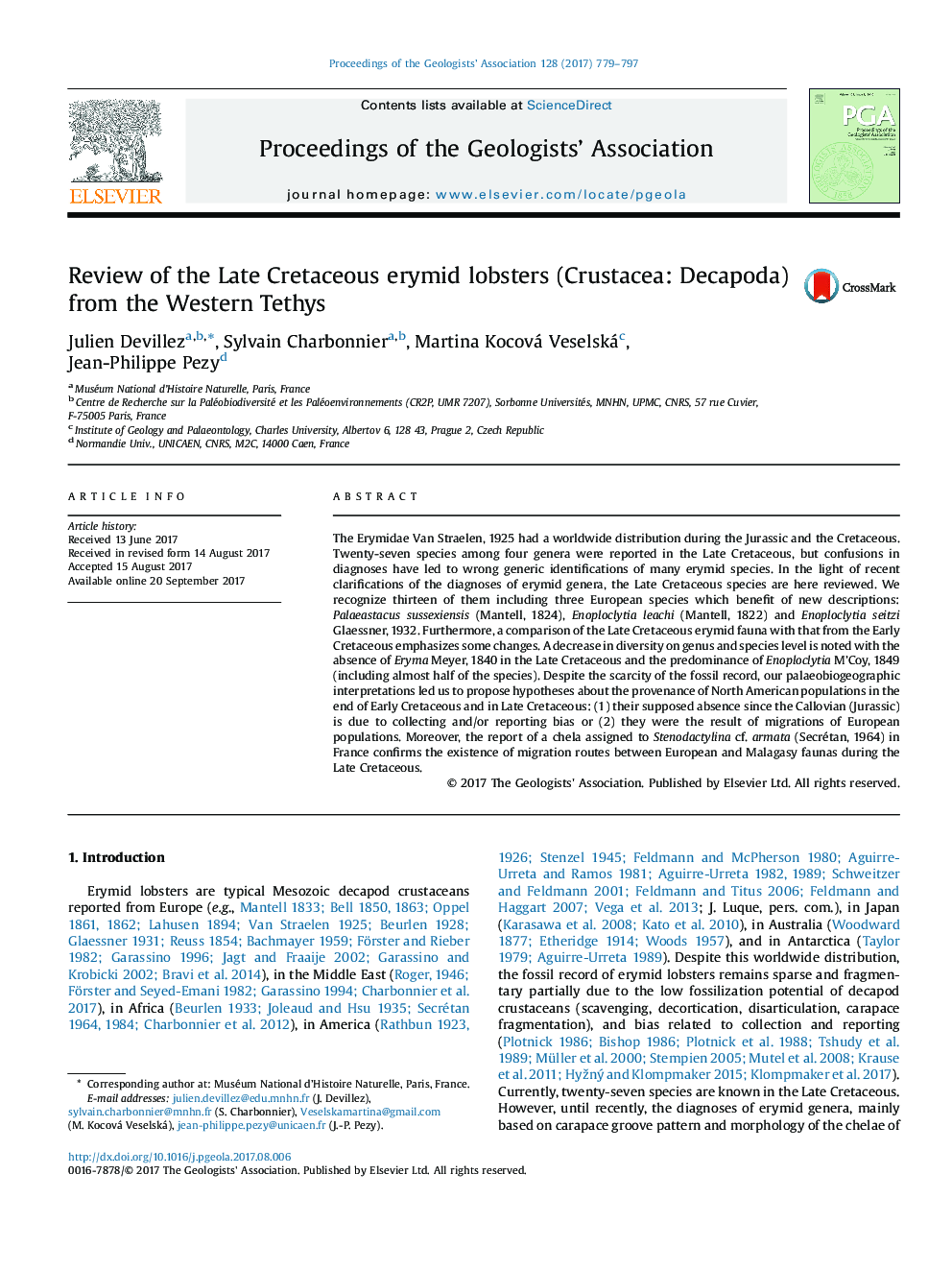| Article ID | Journal | Published Year | Pages | File Type |
|---|---|---|---|---|
| 8914623 | Proceedings of the Geologists' Association | 2017 | 19 Pages |
Abstract
The Erymidae Van Straelen, 1925 had a worldwide distribution during the Jurassic and the Cretaceous. Twenty-seven species among four genera were reported in the Late Cretaceous, but confusions in diagnoses have led to wrong generic identifications of many erymid species. In the light of recent clarifications of the diagnoses of erymid genera, the Late Cretaceous species are here reviewed. We recognize thirteen of them including three European species which benefit of new descriptions: Palaeastacus sussexiensis (Mantell, 1824), Enoploclytia leachi (Mantell, 1822) and Enoploclytia seitzi Glaessner, 1932. Furthermore, a comparison of the Late Cretaceous erymid fauna with that from the Early Cretaceous emphasizes some changes. A decrease in diversity on genus and species level is noted with the absence of Eryma Meyer, 1840 in the Late Cretaceous and the predominance of Enoploclytia M'Coy, 1849 (including almost half of the species). Despite the scarcity of the fossil record, our palaeobiogeographic interpretations led us to propose hypotheses about the provenance of North American populations in the end of Early Cretaceous and in Late Cretaceous: (1) their supposed absence since the Callovian (Jurassic) is due to collecting and/or reporting bias or (2) they were the result of migrations of European populations. Moreover, the report of a chela assigned to Stenodactylina cf. armata (Secrétan, 1964) in France confirms the existence of migration routes between European and Malagasy faunas during the Late Cretaceous.
Related Topics
Physical Sciences and Engineering
Earth and Planetary Sciences
Geology
Authors
Julien Devillez, Sylvain Charbonnier, Martina Kocová Veselská, Jean-Philippe Pezy,
